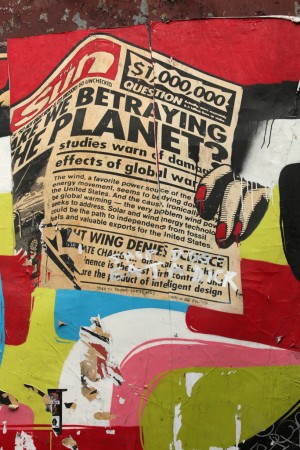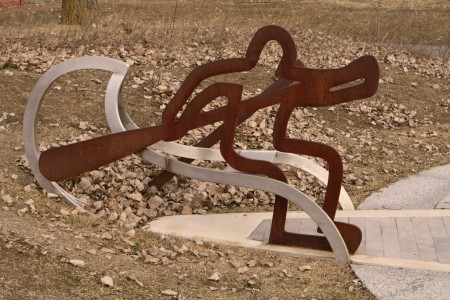One of the neatest things about the Williamsburg area, in Brooklyn, is the street art. Especially down toward the waterfront, there are many walls and buildings with skilfully-executed and creative images on them.
While not the most artistically appealing thing I saw, this was the most topical bit of art. I do like the creative use of the strech-Hummer.
I started off by exploring the area west of Bedford avenue, toward the waterfront across from Manhattan.
Some buildings are nearly covered with overlapping layers of graffiti, some of it more ‘official’ than the rest. Lots of former industrial buildings are along the water, including a gigantic former sugar factory. Many of the old warehouses now seem to contain art and living spaces.
This has always been one of my favourite presidential quotations. I wonder what Eisenhower would think about the state of America today.
I like how ambiguous this image is. The hair and colours seem playful, but the mouth is truly scary.
I don’t know what it means to ‘clasm’ one’s icons, but I like this guy’s moustache.
This large rabbit is really striking, when seen in person. One of the biggest limitations with looking at art on computers is that everything gets reduced to a set scale. That can work as poorly for big pieces of graffiti as it does for Kandinsky’s giant canvasses.
This seems to be advertising masquerading as graffiti. I am not sure if the complaint written beside the woman was put there by whoever put up the large work, or by a subsequent passer-by.
I like how striking the colours are here, as well as how the verdant and bloody hues set each other off.
I wonder how the owners of this shop feel about how the Obama administration has gone so far. Do they think the ‘moment’ had been well captured?
There wasn’t much reference to climate change in the parts of Brooklyn and Manhattan I saw. Perhaps public policy capitals like Washington, D.C. and Ottawa are more seized with the question of what to do than economic capitals like New York City.
The monochrome backing really makes the shades of blue in this heart prominent.
The complex facial expression here is interesting – it looks like a combination of stoic resilience and enduring innocence.



















